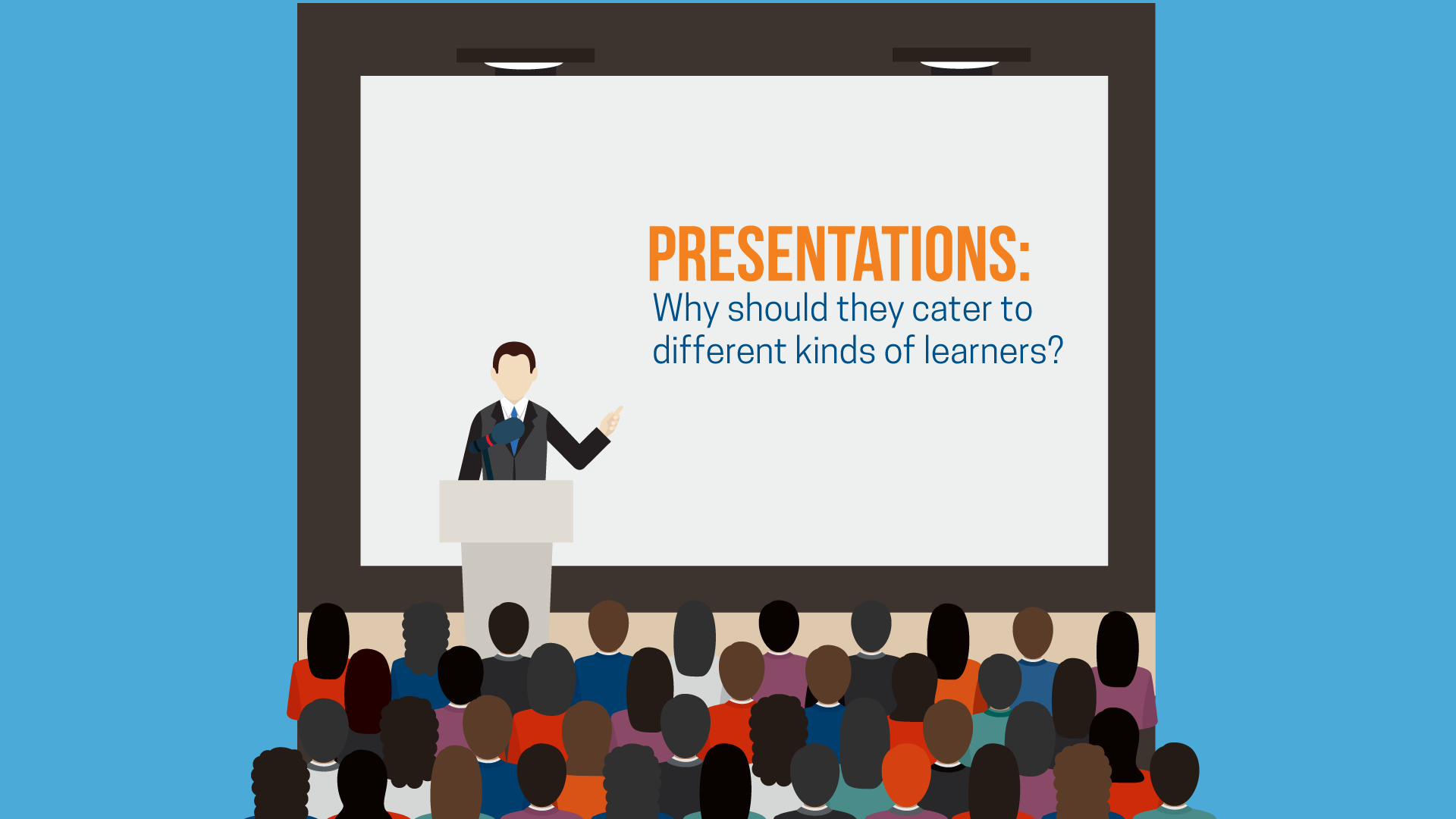Presentations: Why should they cater to different kinds of learners?
![]()


Remember when somebody read you a bed-time story, how engrossed you were in the illustrations than the text. Then, when we were old enough to read and write, some of us picked interest in reading. Well, some of us still found it easier to understand through pictures. I remember this one kid in school who had this ability to understand and remember things at the first instance only by listening and interacting with the teacher.
The point here is, there are different ways that people learn best. When you are presenting, your main aim is to be understood. Your audience is a mixed bag of learners. Hence, it would help if you found ways to keep them engaged. Before we get into some tips on what you could do to get their attention, let’s take a look at the different types of learners.
Learning – where one size does not fit all
There is a popular theory called the VARK model which recognizes four primary kinds of learners: Visual, Auditory, Reading/ Writing, and Kinesthetic.
- Visual learners grasp things when presented with charts, graphs, maps, labeled diagrams, and other such pictorial forms.
- Auditory learners prefer to gather information by listening. They learn best from lectures, web-chats, group discussions and sometimes by saying it – their way.
- Read/Write learners look out for information expressed in words. They prefer reading and writing in all forms – books, assignments, reports, blogs, essays, and articles.
- Kinesthetic learners learn through experience or practice (simulated or real). It can include demonstrations, experiments, simulations, case studies, and applications.
Â
Tips to keep your audience from dozing
As a presenter, you can leverage different techniques and learning aids that suits each learning type. This way your audience will be in a better position to understand your thoughts and ideas. Here are a few suggestions you could incorporate into your presentations.
- You can give them a visual treat
Infographics, Graphs and Simple diagrams on the whiteboard can enhance the visual learners’ level of interest. They will able to conceptualize the matter better.
- Speak to them
Talking to the audience is part and parcel of Presentations. You can take a step further by asking questions and giving them an opportunity to express – this way the auditory learners can pay attention and remember by repeating or saying what they heard.
- Let them interact with text
You could present your audience with annotated handouts, and they can read along while you are speaking. You could conduct a written quiz and trigger their ability to write what they’ve learned.
- A little activity can help them learn
From role plays to assisting you with demonstrations you can help the Kinesthetic learners to understand things better by doing them.
Most of us fall across a range of these learning types. So, it is advisable to ensure your presentation is interesting on all levels. It will give you a good chance of success, and you are bound to keep your audience engaged and satisfied.

 Previous Post
Previous Post Next Post
Next Post